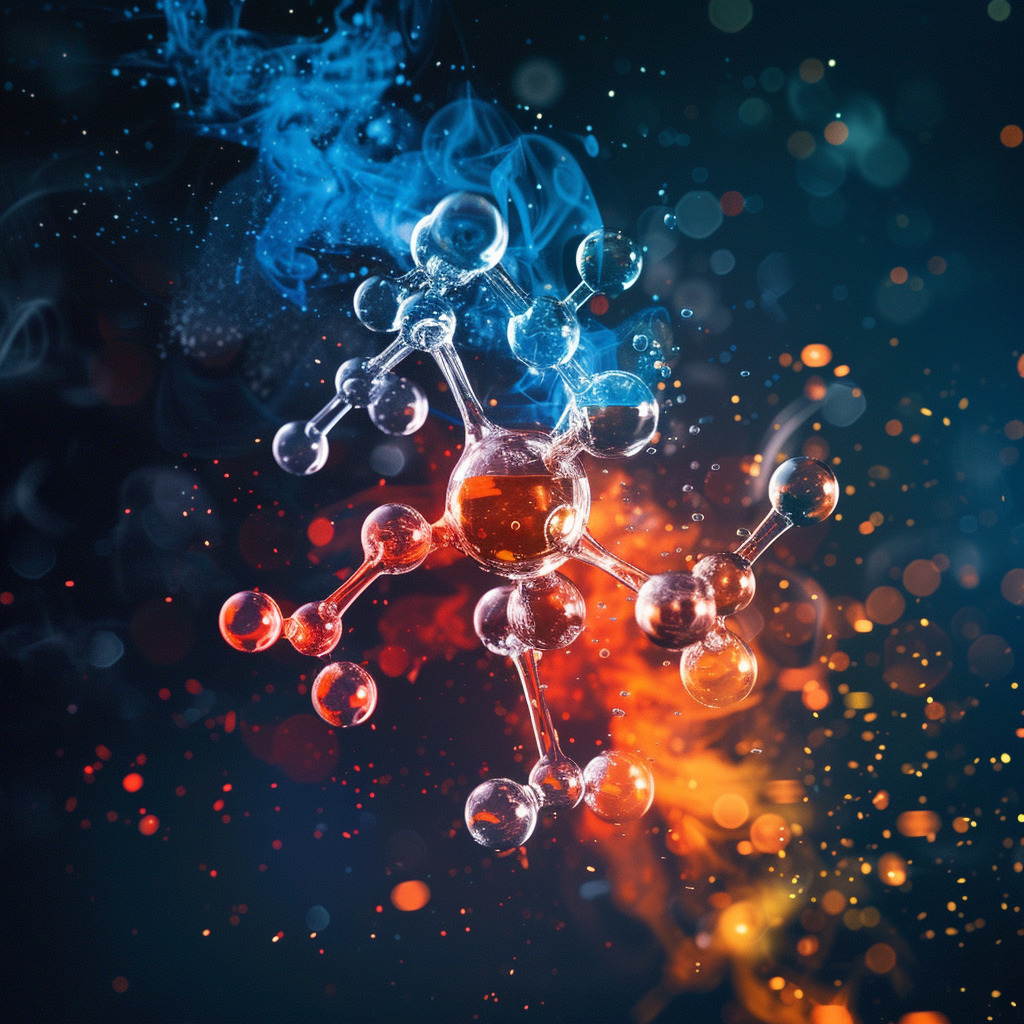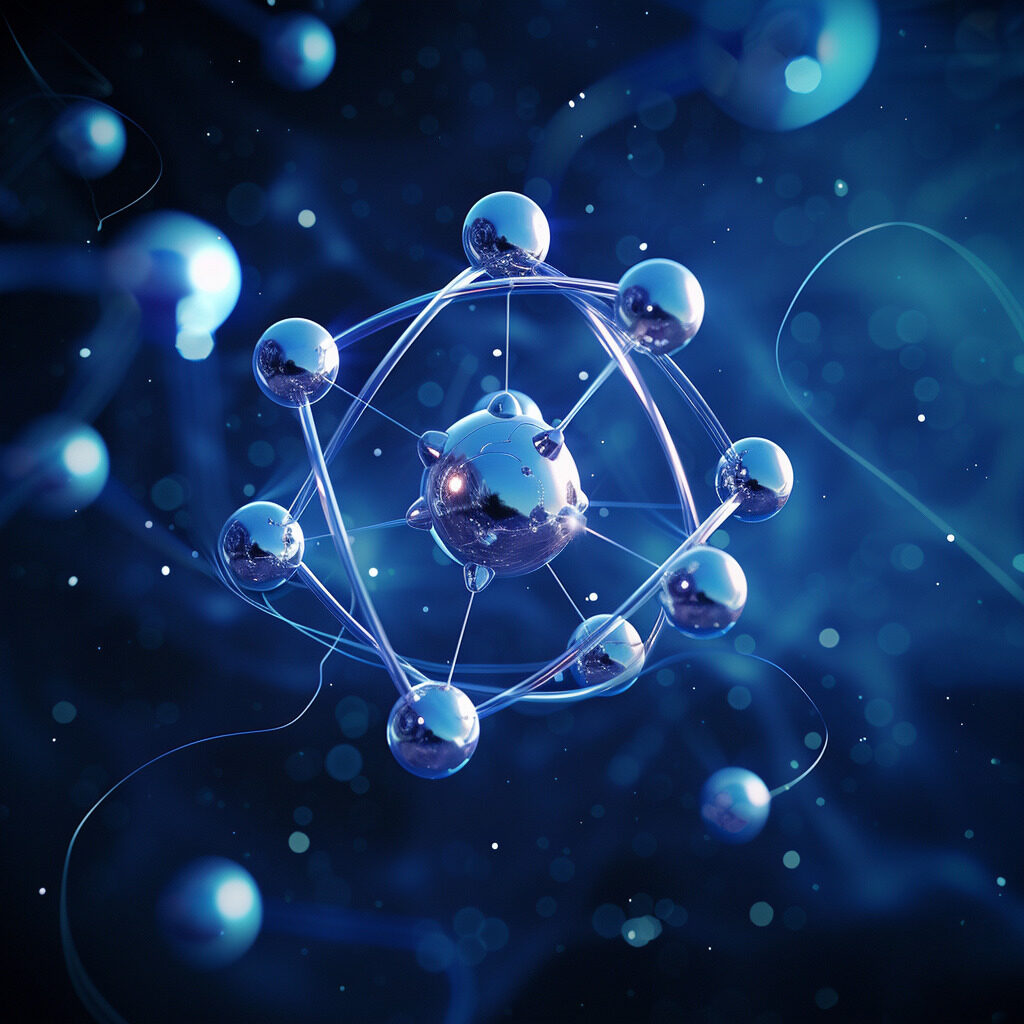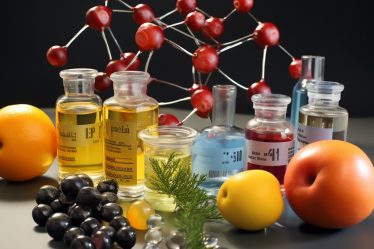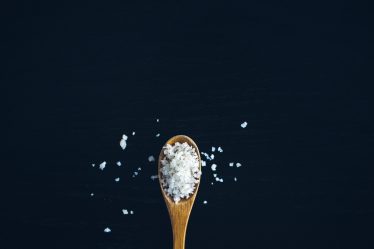
Have you ever wondered why oil and water don’t mix or why certain substances dissolve in water while others don’t? At the heart of these everyday mysteries is a concept known as molecular polarity.
Molecular polarity, influenced by factors such as electronegativity, dipole moment, and intermolecular forces, determines how molecules interact with each other. By exploring the distinction between polar and non-polar molecules, we can examine the invisible forces that govern solubility, chemical reactivity, and even the physical properties of substances around us.
Molecular Polarity and Polar Molecules: Key Takeaways
In a hurry? Don’t worry. Our critical takeaways on molecular polarity and polar molecules will give you a quick and easy summary of the main points:
🟠 Molecular polarity dictates whether substances can dissolve in each other, with polar molecules mixing well with polar solvents and non-polar molecules preferring non-polar environments.
🟠 The nature of a molecule’s polarity impacts its boiling and melting points, which are higher for polar substances due to stronger intermolecular forces than non-polar substances.
🟠 Molecular polarity determines the strength and type of intermolecular forces present, influencing how substances react chemically and their stability in different environments.
If you find polar and non-polar molecules challenging, don’t worry! Personalized tutoring or interactive chemistry lessons make these concepts more straightforward. Explore more chemistry topics and broaden your knowledge with our free World of Chemistry blogs.
What is Molecular Polarity and Why Does It Matter?
At its core, molecular polarity is the distribution of electrical charge over the atoms in a molecule. When electrons in a molecule are unevenly distributed, it creates a dipole: a pair of charges, positive and negative, separated by a distance. This uneven charge distribution makes one end of the molecule slightly positive and the other somewhat negative, giving rise to what we know as a polar molecule.
Polar Molecule Example: Water (H₂O) demonstrates polarity with its uneven charge distribution due to the oxygen atom’s higher electronegativity.
Non-Polar Molecule Example: Methane (CH₄) shows non-polarity with an even charge distribution across its symmetrical tetrahedral shape.
The Importance of Molecular Polarity in Chemistry and Biology
Molecular polarity affects the solubility of molecules, their boiling and melting points, and their reactivity with other substances. In biology, the polarity of molecules determines the structure and function of biomolecules, such as proteins and nucleic acids.
Chemical Reactions and Solubility: Polarity determines how molecules interact with each other. Polar substances dissolve well in polar solvents (like water), whereas non-polar substances dissolve in non-polar solvents (like oil).
Biological Functions: In biology, molecular polarity is critical for the structure and function of biomolecules. For example, the polar nature of water makes it an excellent solvent for ions and polar molecules, facilitating various biological reactions and processes. Additionally, the polarity of molecules like proteins and DNA dictates how they fold, their stability, and their interaction with other molecules within cells.
Factors Affecting Molecular Polarity
Several factors determine molecular polarity:
Electronegativity: A measure of an atom’s ability to attract electrons.
Bond Polarity: The result of electronegativity differences between bonded atoms.
Dipole Moment: The measure of charge separation within a molecule.
Molecular Geometry: The 3D arrangement of atoms in a molecule, affecting overall polarity.
Are you finding the polarity and non-polarity of molecules tricky? A chemistry tutor can provide personalized lessons tailored to your needs, making organic and inorganic chemistry understandable and enjoyable.
Electronegativity and Bond Polarity
Electronegativity is how well an atom attracts electrons in a bond. It shows how strong the atom pulls on electrons. Electronegativity changes across the periodic table. It goes up from left to right and down from top to bottom. Fluorine is the most electronegative element, pulling electrons very hard, while elements like cesium and francium are the least electronegative, pulling electrons very weakly.
What is Bond Polarity and How is it Related to Electronegativity?
Bond polarity happens when two atoms with different electronegativities bond, making the electrons uneven. This makes one side of the bond a bit positive and the other a bit negative. Polar covalent bonds have big differences in electronegativity (e.g., HCl), while non-polar covalent bonds have minor differences in electronegativity (e.g., Cl₂). Electronegativity values can tell us if a bond is polar, where a bigger difference means a polar bond and a smaller one means a non-polar bond.
How do you Show Bond Polarity?
We can show bond polarity using Lewis dot structures, which use dots for electrons, arrows for bond dipoles pointing to the more electronegative atom, and symbols for partial charges (δ+ for the less electronegative atom and δ- for the more electronegative atom). For example, in water (H₂O), the oxygen atom is more electronegative, so it has a partial negative charge, while the hydrogen atoms have partial positive charges.
How do you Calculate the Bond Dipole Moment and the Percent Ionic Character?
The bond dipole moment tells us how polar a bond is, found by multiplying the charge difference by the atom distance. It shows the direction and size of polarity. The percent ionic character tells us how much a bond is like an ionic bond, found from the electronegativity difference and the dipole moment. This helps us know whether the bond type is more covalent or ionic. For example, a bond with a high percent ionic character is more like an ionic bond, giving electrons instead of sharing them.
Anyone curious about chemistry in daily life can explore simple experiments or consult a chemistry tutor to discover more about the science behind these everyday phenomena.
How Dipole Moment Affects Molecular Polarity
The dipole moment shows how electrical charge is distributed within a molecule. It considers the arrangement and magnitude of charged regions. Essentially, molecules with significant dipole moments are polar, exhibiting uneven charge distribution. For instance, water (H₂O) is polar due to its asymmetrical shape, leading to a high dipole moment. In contrast, carbon dioxide (CO₂) remains non-polar despite its polar bonds because its symmetrical linear shape balances out the charge distribution, resulting in a net-zero dipole moment.
The Difference Between a Polar Molecule and a Polar Bond
Polar molecules and polar bonds are not the same thing. A molecule can have polar bonds but still be non-polar if the bond dipoles cancel each other out. A molecule can also have non-polar bonds but be polar if the shape of the molecule makes the charge uneven. For example, ammonia (NH₃) is polar because it has a triangular shape and a nonzero dipole moment, even though it has non-polar bonds.
Predicting Molecular Polarity Using Molecular Geometry
The shape of a molecule affects its dipole moment and polarity. We can use the VSEPR theory to predict the shape of a molecule based on how the electron pairs around the central atom repel each other. This theory helps us understand why molecules like methane (CH₄) are non-polar with a symmetrical tetrahedral shape, while water (H₂O) is polar with an asymmetrical bent shape.
Using Symmetry to Predict Molecular Polarity
Symmetry also affects dipole moment and polarity. Symmetrical molecules tend to have no or low dipole moments, making them non-polar. Asymmetrical molecules tend to have high dipole moments, making them polar. We can use symmetry elements and operations to analyze the symmetry of a molecule. For example, benzene (C₆H₆) is non-polar because it has a symmetrical hexagonal shape, while chloroform (CHCl₃) is polar because it is asymmetrical.
Suppose you’re on the lookout for a chemistry tutor. In that case, a simple search like “organic chemistry tutor Liverpool” or “inorganic chemistry teacher Edinburgh” on platforms like meet’n’learn can help you find the right private teacher for your needs.
Those who prefer group learning environments can easily find chemistry classes nearby by searching for “chemistry classes Leeds” or “chemistry lessons London” online, leading to local schools or educational centers.
Applications and Examples of Molecular Polarity
Molecular polarity significantly influences the behavior and interaction of substances in various contexts, from solubility to chemical reactivity.
How Does Molecular Polarity Affect the Solubility of Substances?
The solubility of chemical compounds depends on their polarity. Polar substances dissolve in polar solvents and non-polar substances in non-polar solvents. For example, salt (NaCl) dissolves in water (H₂O), a polar solvent, because the salt ions attract water dipoles. Non-polar oil does not dissolve in water but in hexane (C₆H₁₄), a non-polar solvent. The polarity of the solute and solvent determines if they can dissolve in each other or not.
How Does Molecular Polarity Affect the Intermolecular Forces of Substances?
Molecular polarity affects the intermolecular forces, which are the forces between molecules. Polar molecules have stronger intermolecular forces, like dipole-dipole interactions and hydrogen bonding, than non-polar molecules, which have weaker London dispersion forces. For example, water (H₂O) has strong hydrogen bonds because of its polarity, making it boil at a high temperature. Methane (CH₄), a non-polar molecule, has weak London dispersion forces, making it boil at a low temperature.
How Does Molecular Polarity Affect the Physical Properties of Substances?
The physical properties of substances, namely boiling and melting points, vapor pressure, viscosity, and surface tension, depend on the intermolecular forces affected by molecular polarity. Polar substances with strong intermolecular forces, like water, usually have higher boiling and melting points than non-polar substances with weak intermolecular forces, like nitrogen gas (N₂), which has a very low boiling point. The stronger the intermolecular forces, the more energy is needed to change the state of a substance, changing its physical properties.
How Does Molecular Polarity Affect the Chemical Reactivity of Substances?
Molecular polarity influences a substance’s reactivity, which is its ability to form bonds, give or take electrons, and join in reactions. Because of their uneven charge distribution, polar molecules are more reactive in polar reactions. For example, polar solvents are good at dissolving polar substances, making reactions between ionic compounds easier. Non-polar molecules like benzene (C₆H₆) are less reactive in polar conditions but can react in ways that keep their non-polar nature, such as substitution. The polarity of a molecule affects how it reacts and what kind of reactions it can do.
How to Learn the Basics of Molecular Polarity and Polar Molecules
In wrapping up, we’ve covered the critical role of molecular polarity, shaped by factors like electronegativity, bond polarity, dipole moment, and molecular geometry, in dictating how molecules behave and interact.
If you struggle to grasp certain concepts, don’t worry; you’re not alone. Why not seek some extra help? Consider enrolling in specialized classes or hiring a private tutor. With their focused lessons and personalized guidance, they can help clarify complex ideas and make them more accessible.
Are you struggling to grasp molecular polarity and polar molecules? An organic chemistry tutor or hands-on biochemistry lessons can make a big difference in turning these complex ideas into something you can easily understand and use.
Molecular Polarity and Polar Molecules: Frequently Asked Questions
1. What is Molecular Polarity?
Molecular polarity is the uneven distribution of electrical charge across a molecule due to differences in electronegativity between atoms.
2. How Does Electronegativity Affect Molecular Polarity?
Electronegativity differences between bonded atoms create partial positive and negative charges, influencing the molecule’s overall polarity.
3. What is the Difference Between Polar and Non-Polar Molecules?
Polar molecules have an uneven electron distribution, resulting in a net dipole moment, whereas non-polar molecules have an even distribution with no net dipole.
4. Can a Molecule Have Polar Bonds but be Non-Polar Overall?
Yes, a molecule can have polar bonds but be non-polar if its geometry allows the bond dipoles to cancel each other out.
5. Why is Water Polar?
Water is polar because its bent molecular shape prevents the dipole moments of its O-H bonds from canceling out, resulting in a net dipole moment.
6. How Does Molecular Polarity Affect Solubility?
Molecular polarity dictates solubility with the principle “like dissolves like,” where polar substances dissolve in polar solvents, and non-polar substances dissolve in non-polar solvents.
References:
1. Khan Academy
2. PHET
3. Wikipedia



